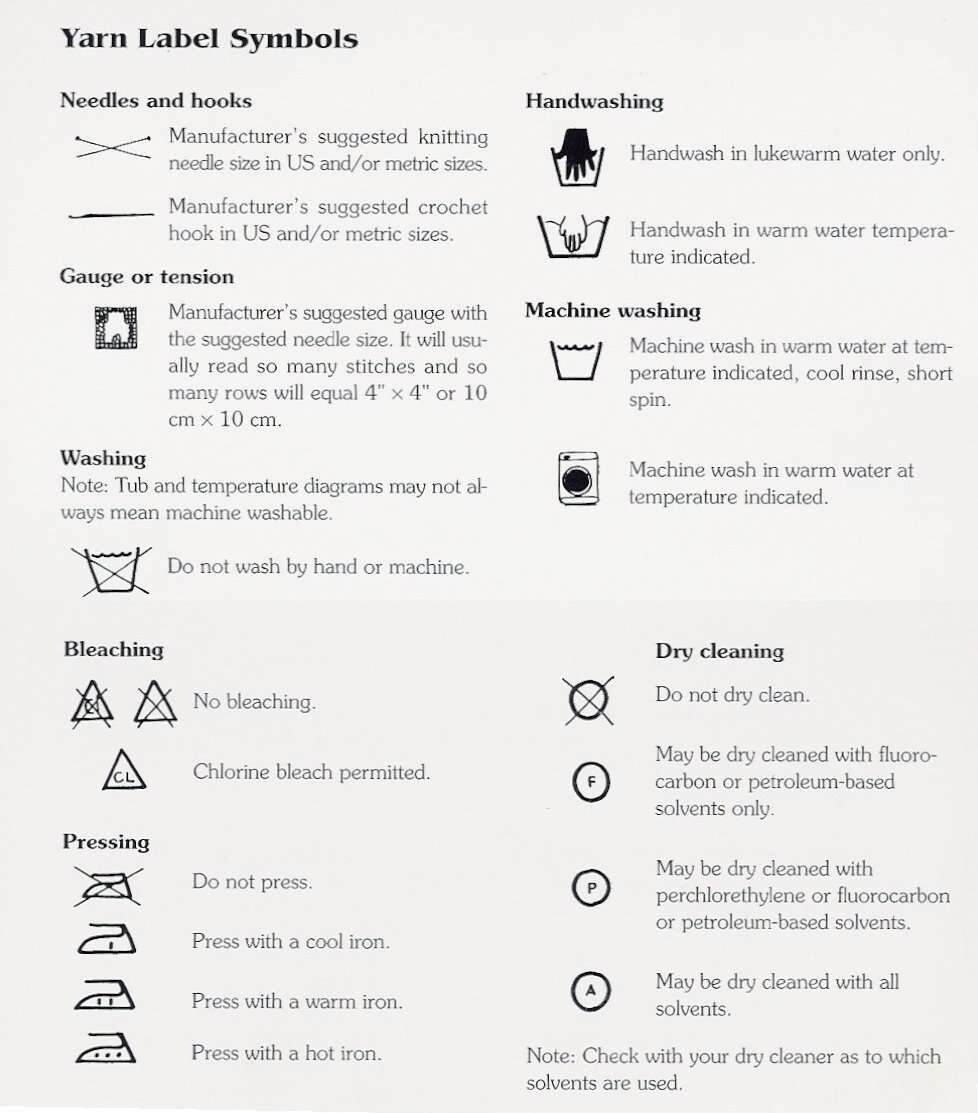

a knitting circle at The Unitarian-Universalist Fellowship of Huntington, NY




The symbols are now in use, but there will be a period of transition as knitters become accustomed to the designations. Newer patterns will incorporate these symbols, but knitters will need to make the translations when using older patterns.
What's Your Gauge?
The small boxes with numbers and needles relate to the needle size used to achieve the correct gauge with the yarn. As we know, gauge is a personal matter, and is among many factors which affect the final result. The suggested needle size merely offers a starting place for your swatch. Most domestic yarns will offer both a metric and U.S. version of the needle size. However, if the yarn is manufactured abroad, do not expect that the U.S. size will be shown. If the number is listed with a comma where it does not seem to belong (i.e., 3,5), it is a metric number, and you may need a needle gauge to determine the U.S. equivalent.
Along the bottom and side of the box are the dimensions (10cm x 10cm,
4 inches) as well as the number of stitches and rows your yarn will produce under the general tension standards. This is the part which will vary greatly. It does not matter what needle size you need to get the correct gauge, but you must achieve that gauge if the knit project is to fit.
Aftercare
Laundry instructions are suggested with a temperature limit inside the box. The yarn label will indicate whether the yarn should be dry-cleaned or washed by hand or machine, and will also indicate the best method for drying your project. Even the temperatures for drying may be suggested. This may be critical information, particularly when acrylics are involved. This fiber is sensitive to high heat, which can permanently alter the hand or drape of the fiber.

As you can see, the label can be a helpful resource of information when making a yarn choice. This article is not intended to be a complete discourse on the subject, but more of a starting point on the topic. For more information, please check out the data at YarnStandards.com, a Web site sponsored by the Craft Yarn Council of America.
(from the Creative Knitting e-Newsletter, May 23, 2008)

